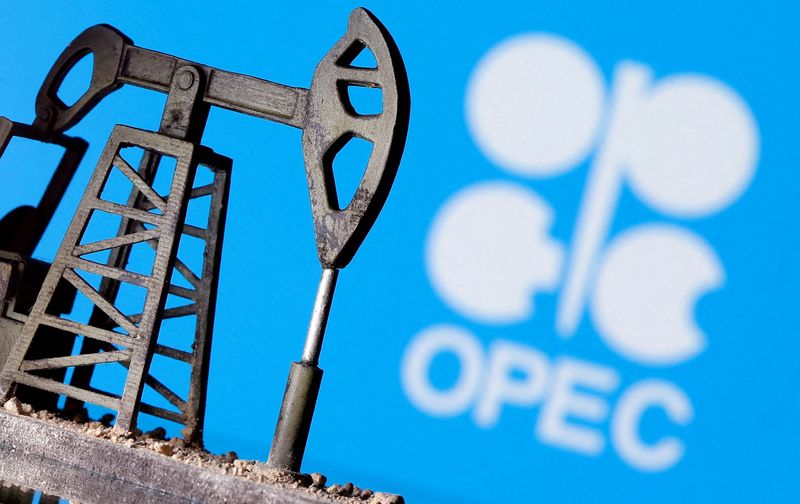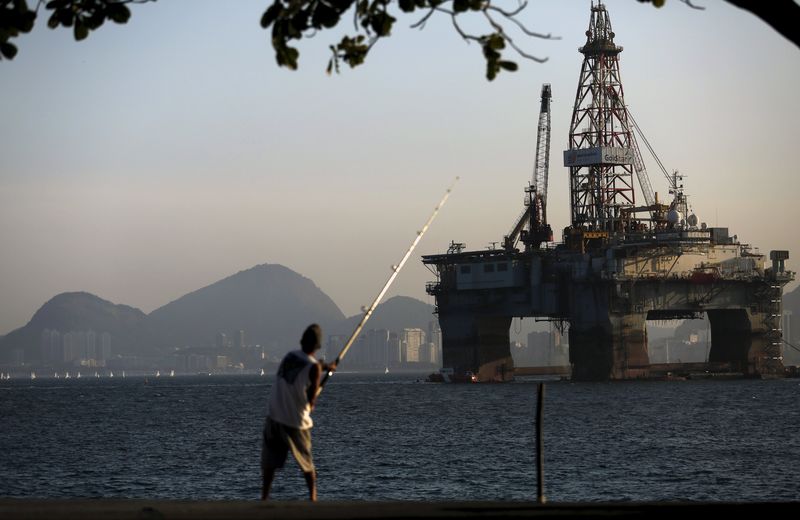By Georgina McCartney and Liz Hampton
HOUSTON/DENVER (Reuters) -The oil industry and markets have had a muted response to the growing conflict in the Middle East, a sign of how well oil supplies are stocked as U.S. production grows and OPEC+ prepares to boost to increase production.
The global oil benchmark rose 5% on Tuesday after Iran, a major producer and member of the Organization of the Petroleum Exporting Countries, attacked Israel in retaliation for its campaign against Hezbollah in Lebanon.
Brent prices rose just 2.6% to $73.56 on Tuesday, largely in line with last week’s levels. Oil futures rose just 34 cents on Wednesday after the US reported a big increase in oil inventories. [O/R]
According to US government data, the US is pumping about 13.4 million barrels of oil per day and production is expected to rise to a record 13.49 million barrels per day by the end of the year. Meanwhile, OPEC and its allies, a group known as OPEC+ that has focused on cutting production since 2022, will start increasing output later this year.
In the past, such escalating conflict in the oil-producing regions of the world was expected to have a greater and lasting impact on prices. But there is enough supply and concerns about weak demand to protect the market from these events.
“In this new world where U.S. shale oil is the dominant global oil producer, it appears that the ‘fear premium’ no longer exists to the same extent,” said Rhett Bennett, CEO of Black Mountain Energy, which has operations in the Permian Basin. and Western Australia.
“This diversity of supply from domestic sources, combined with healthy spare capacity within OPEC, translates into a sense that the market is insulated from a dramatic supply shock – regardless of the ongoing flare-ups in the Middle East,” Bennett added.
Global crude oil supplies have yet to be disrupted by the war in the Middle East and Iranian-backed Houthi rebel attacks on ships in the Red Sea.
Years of production cuts leave OPEC+ with significant spare capacity and this has limited price increases from the escalating conflict in the Middle East, analysts say, as other producers could theoretically offset supply disruptions.
The International Energy Agency estimates OPEC+’s spare production capacity at 5.7 million barrels per day, almost 6% of oil consumption, with Saudi Arabia accounting for 54% of the buffer. This is more than Iran’s production of 3.4 million barrels per day.
US producers remain stable
Brent prices fell 17% in the third quarter and 9% in September, the biggest monthly decline since November 2022, partly due to downward revisions to OPEC’s global demand growth outlook. West Texas Intermediate fell 16% for the quarter and 7% for the month to $68.17 per barrel.
“The U.S. has so much production, it’s a strategic buffer,” said Dan Pickering, chief investment officer at Pickering Energy Partners. “I think the supply and demand equation is unchanged, even though the risks of the supply and demand equation are changing.”
While oil may draw some immediate support from the developing conflict in the Middle East, it is unlikely to prompt U.S. operators to quickly ramp up production, Pickering and other shale oil executives said.
Many are exercising caution as OPEC+ plans to add another 180,000 barrels per day to the global market in December. Some analysts have said a lack of compliance by overproducing members could prompt Saudi Arabia and others to increase production even faster from December.
“It is too early to weigh these events against the actions OPEC may or may not take to impact supply,” said Michael Oestmann, the CEO of Tall City Exploration, a producer in Midland, Texas.
“This is unlikely to boost drilling or cause any change in business plans,” he added.
OPEC+ is currently cutting production by a total of 5.86 million barrels per day, or about 5.7% of global demand.
Analysts at consultancy Wood Mackenzie predict higher Brent prices for October at $81 per barrel. They noted that this could be adjusted up or down depending on whether escalation in the Middle East can be avoided.

Brent futures rose 34 cents, or 0.46%, to $73.90 a barrel on Wednesday, while U.S. West Texas Intermediate crude rose 27 cents, or 0.39%, to $70.10 a barrel .
“We see it as a temporary uptick, but if the war lasts longer and more countries are involved, prices could remain high,” said Mark Marmo, the CEO of Deep Well Services, Zelienople, a Pennsylvania-based oilfield company.


